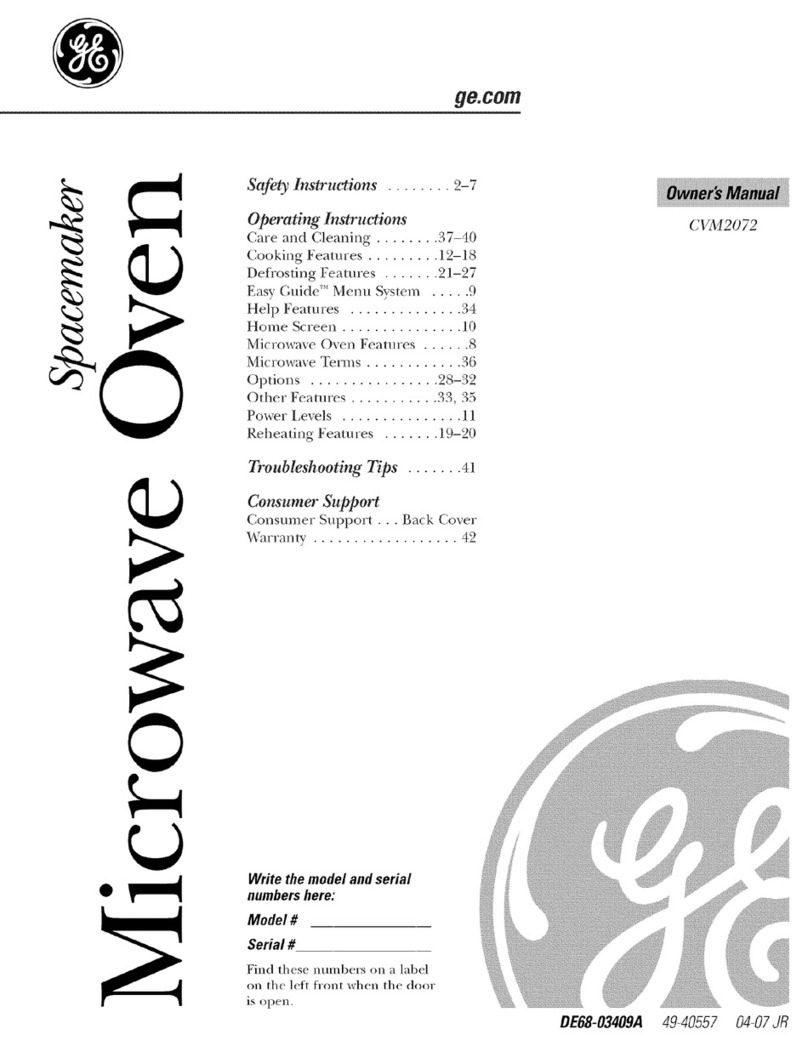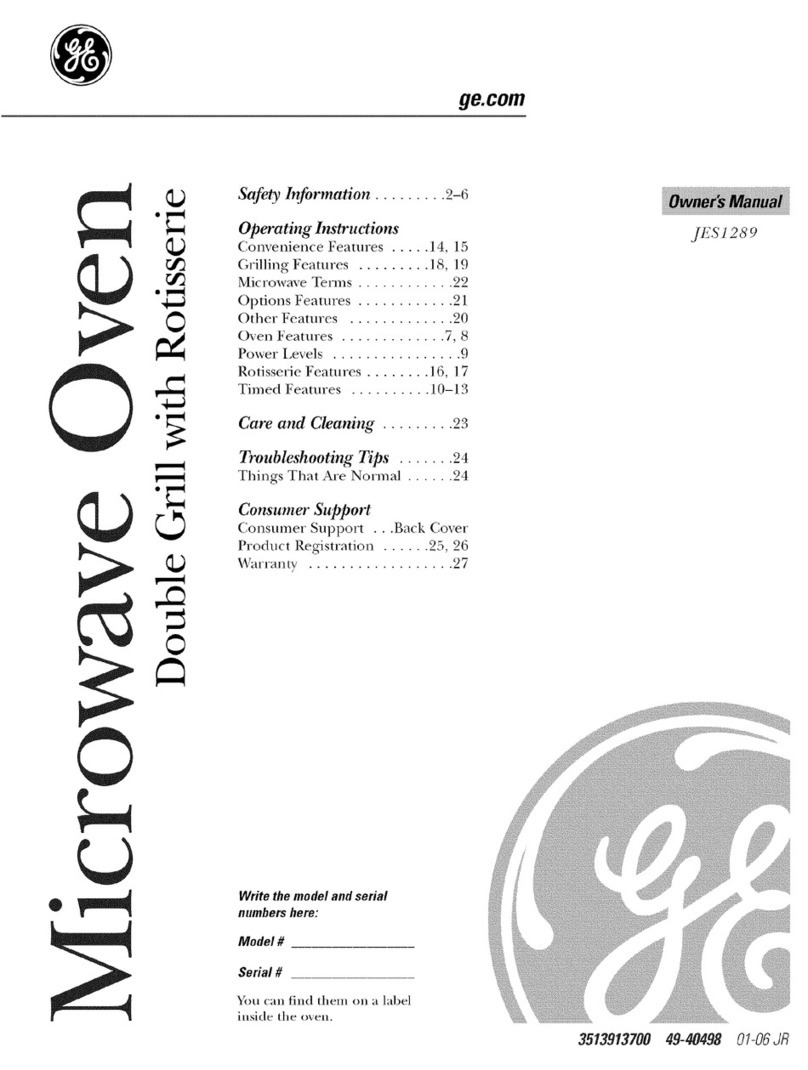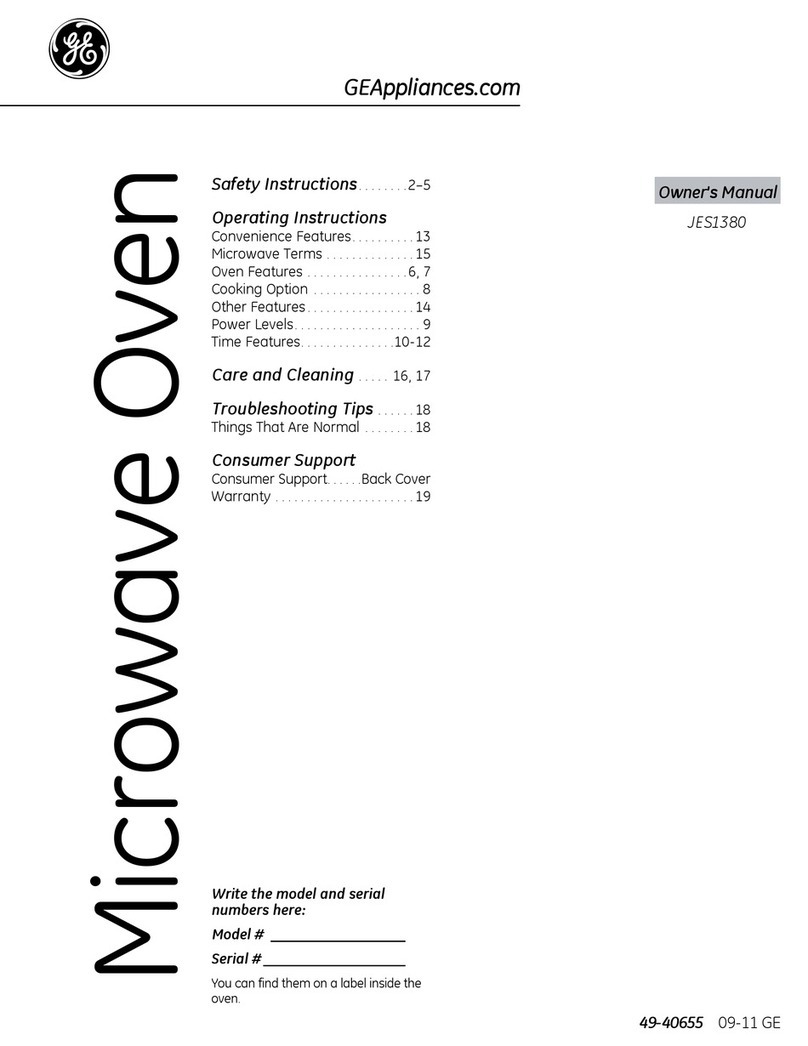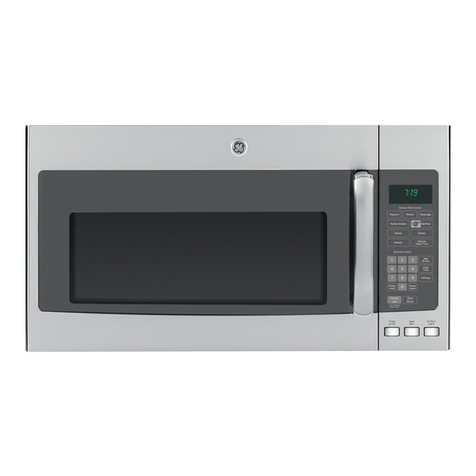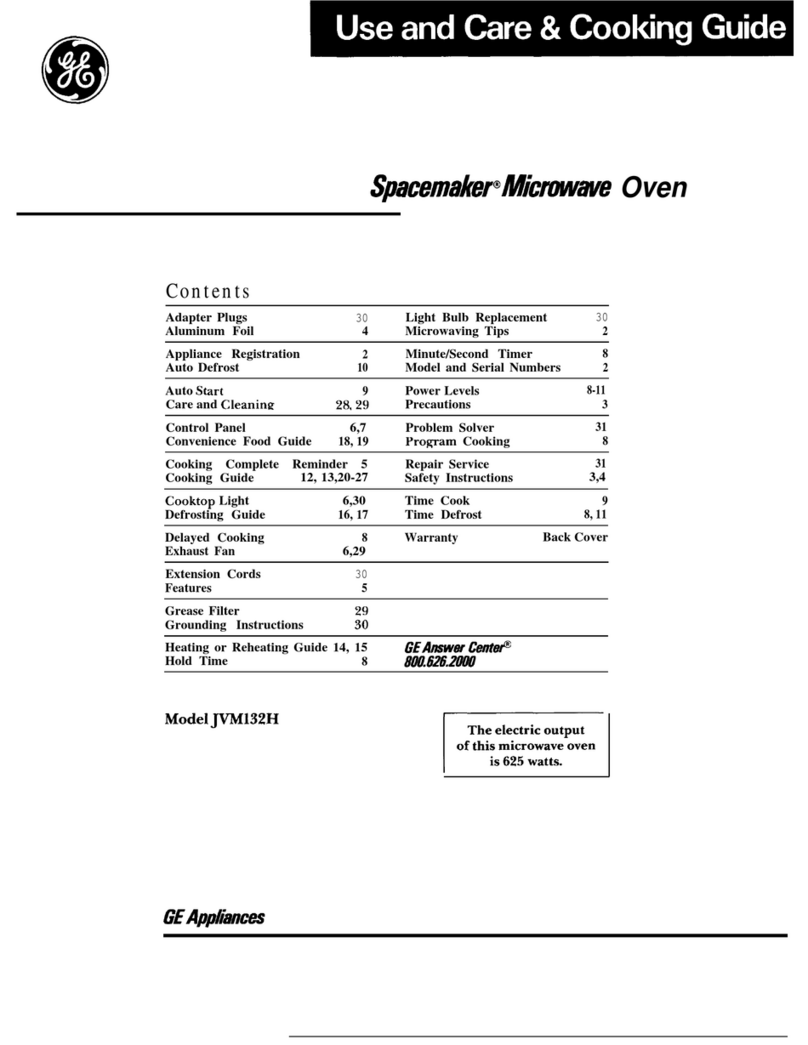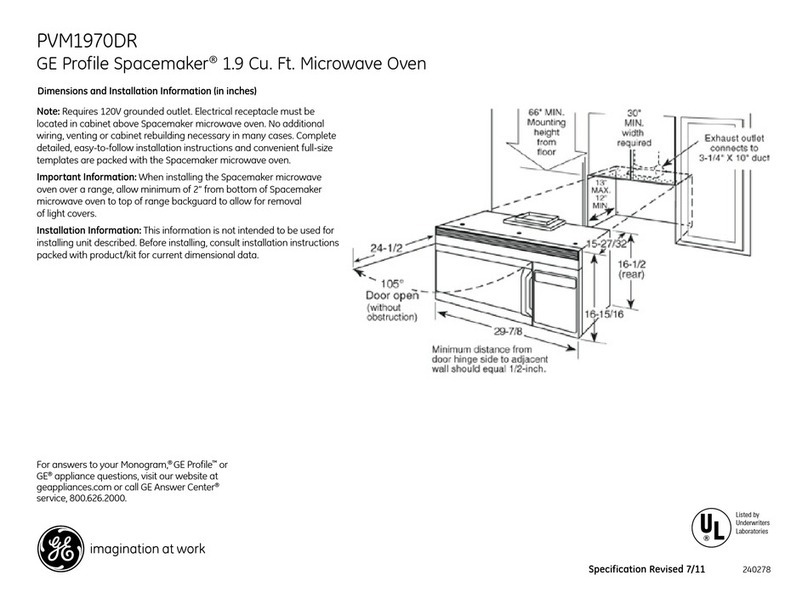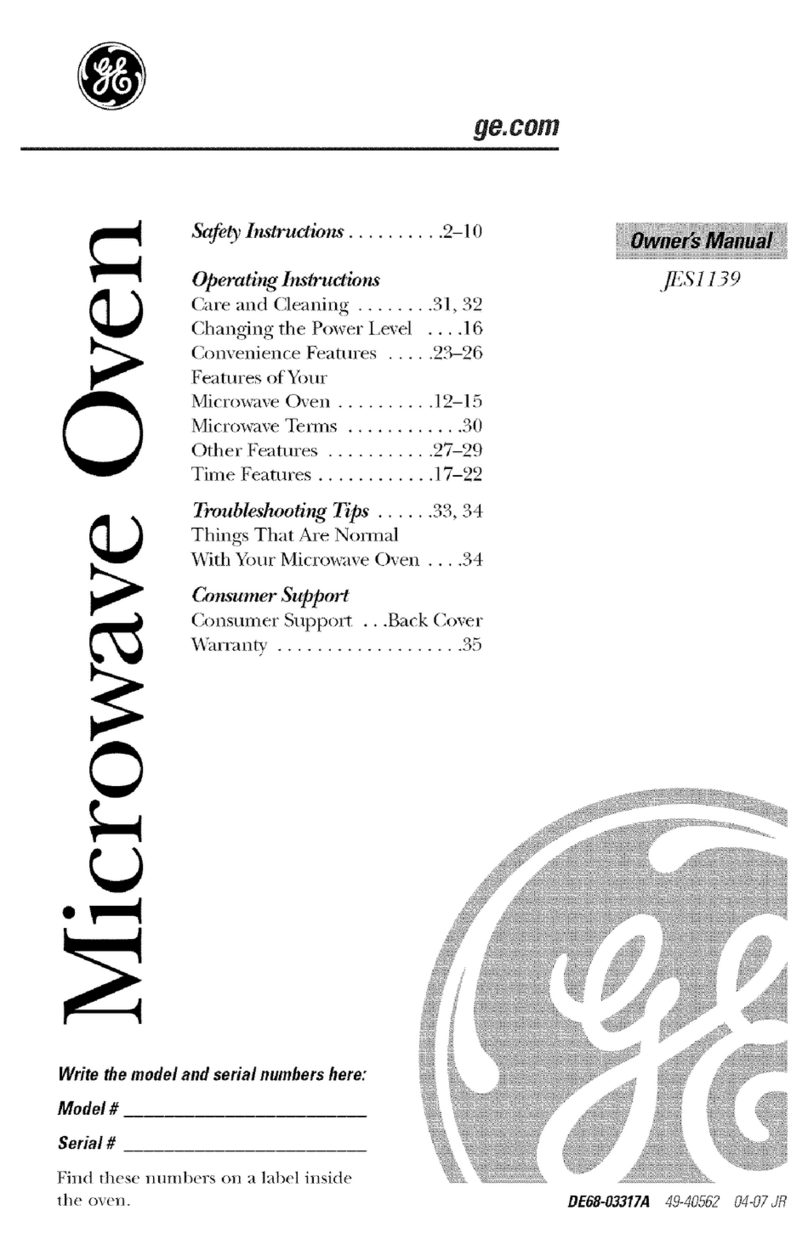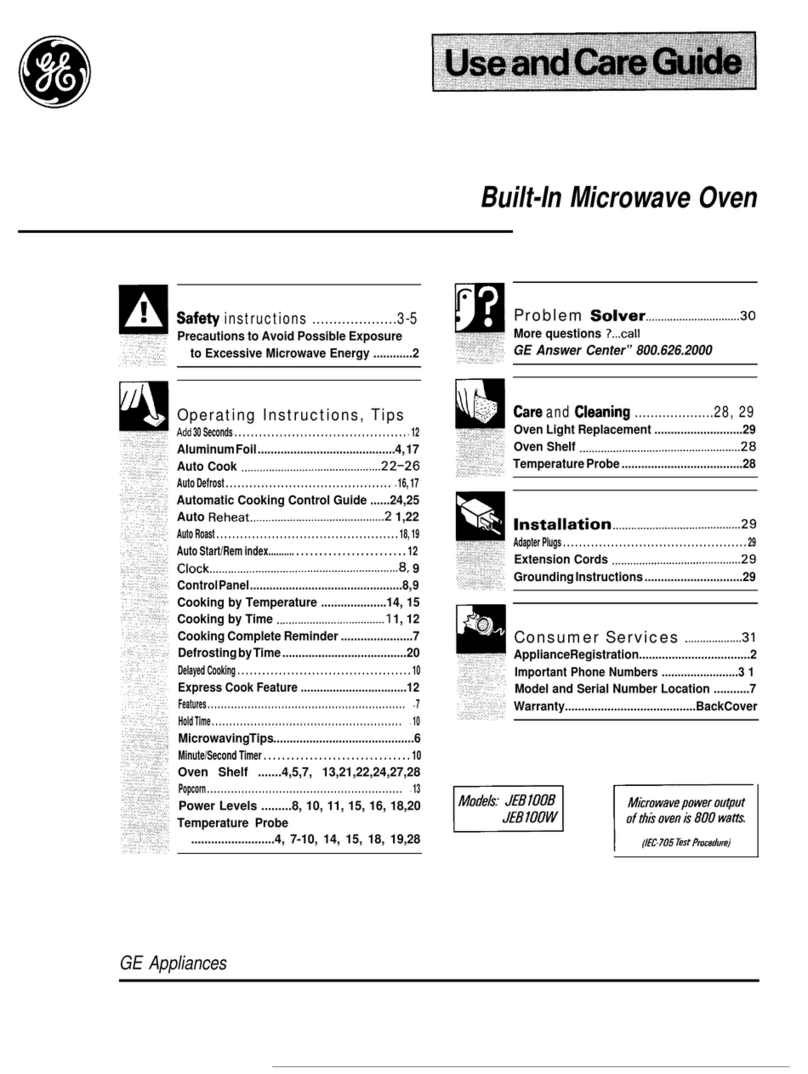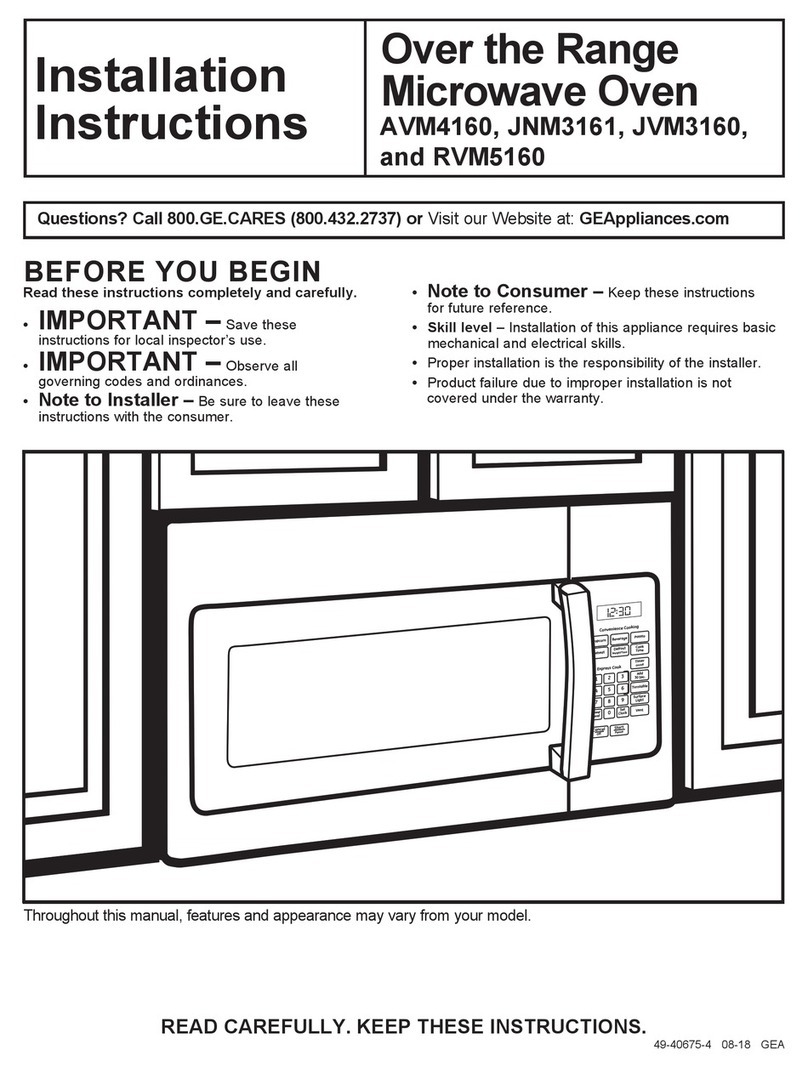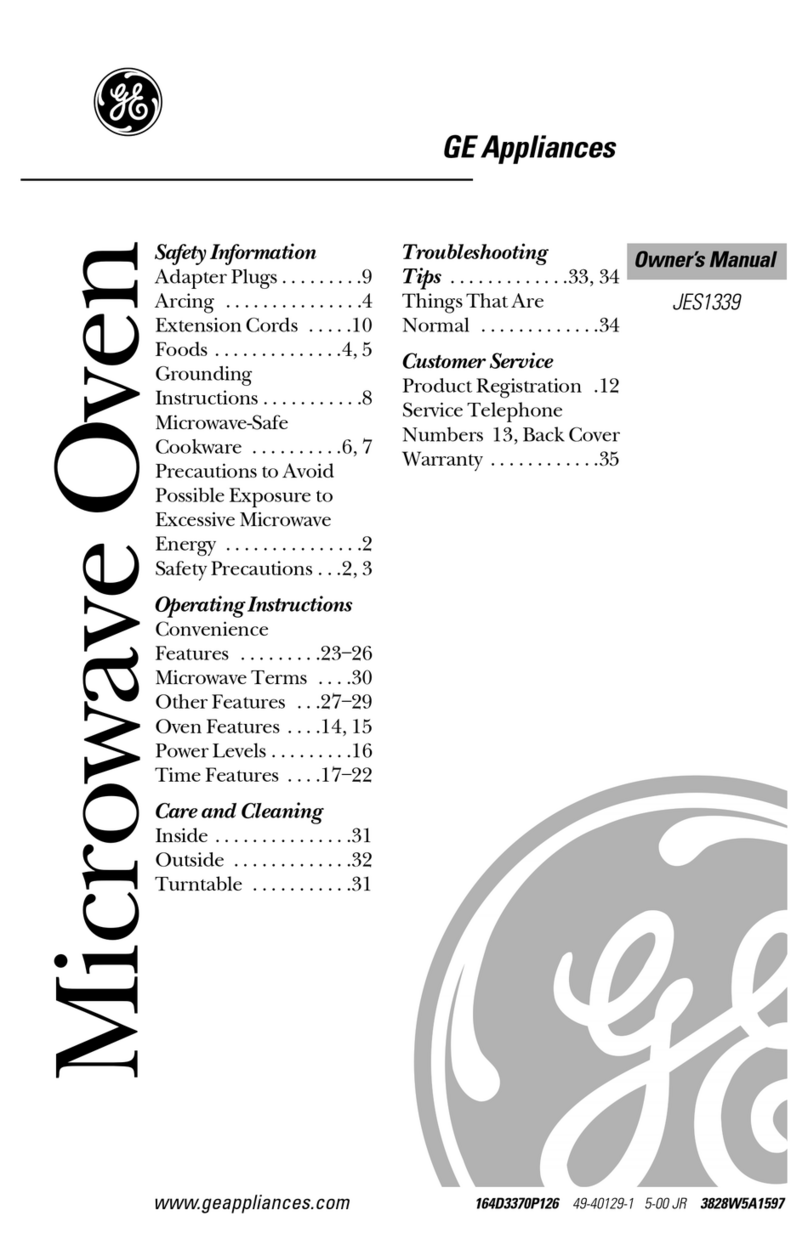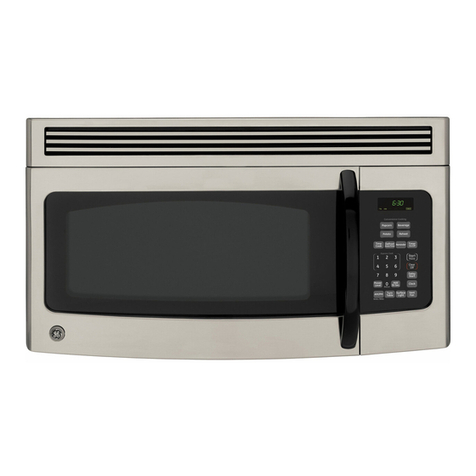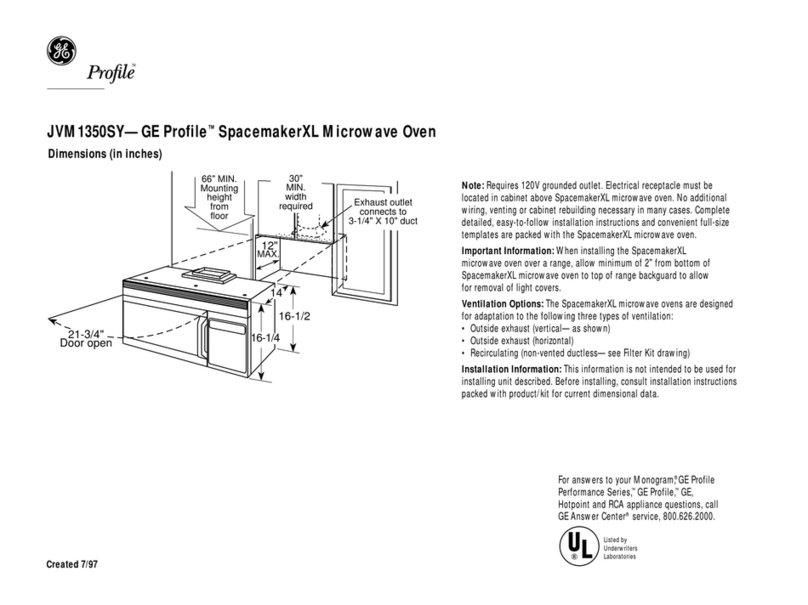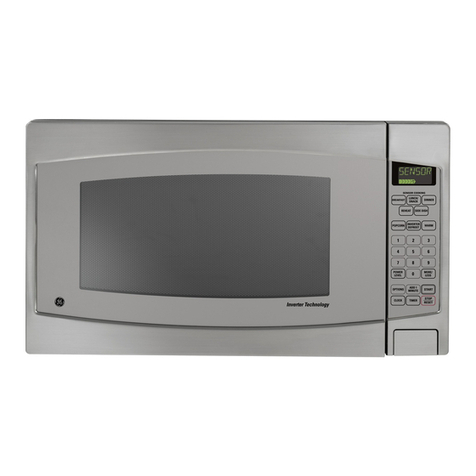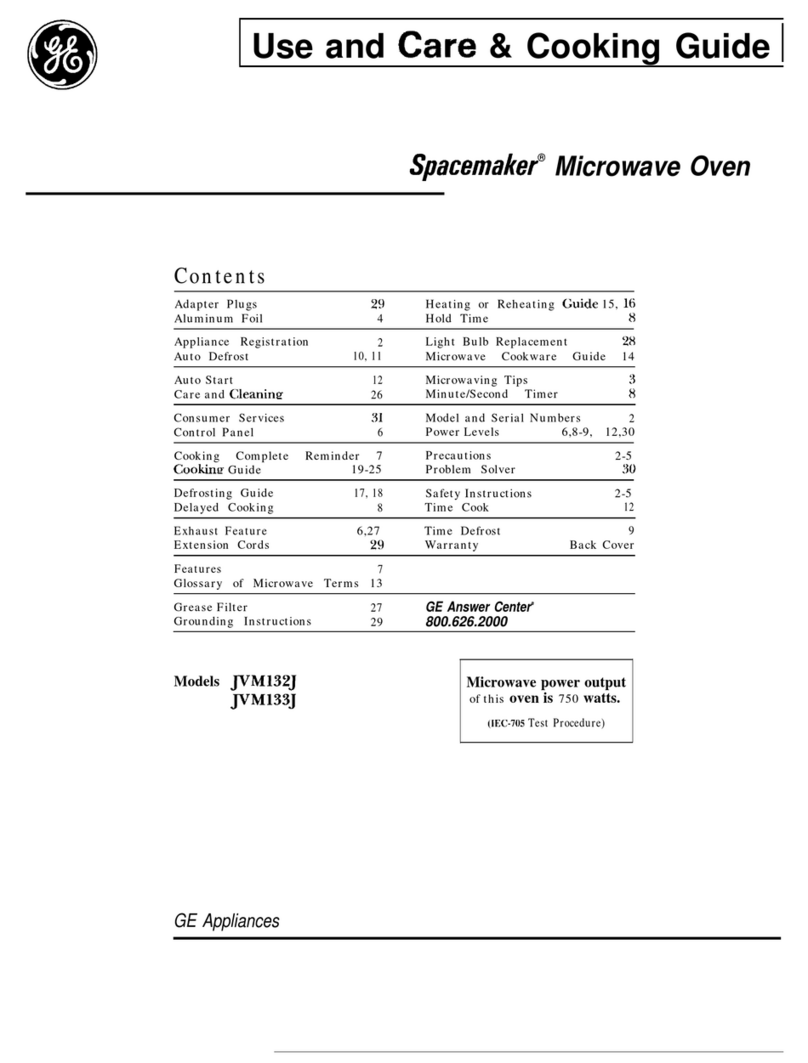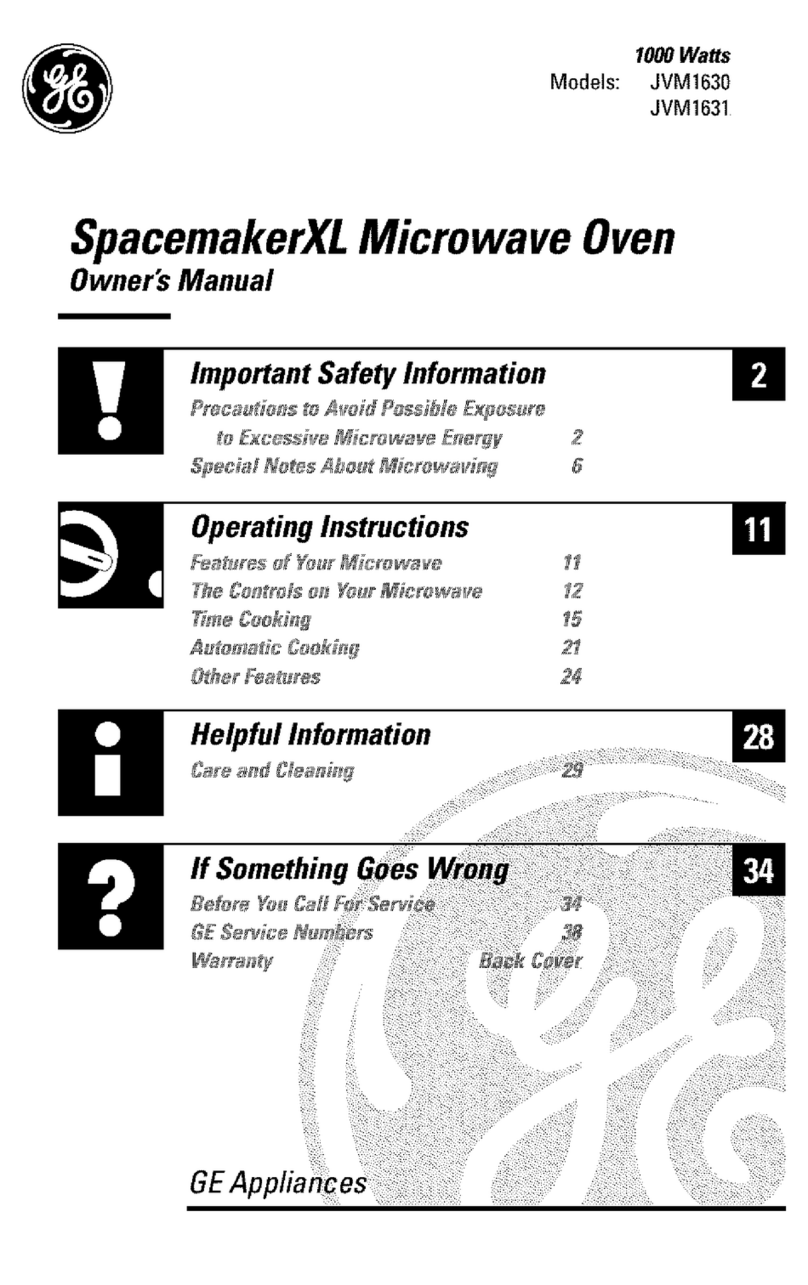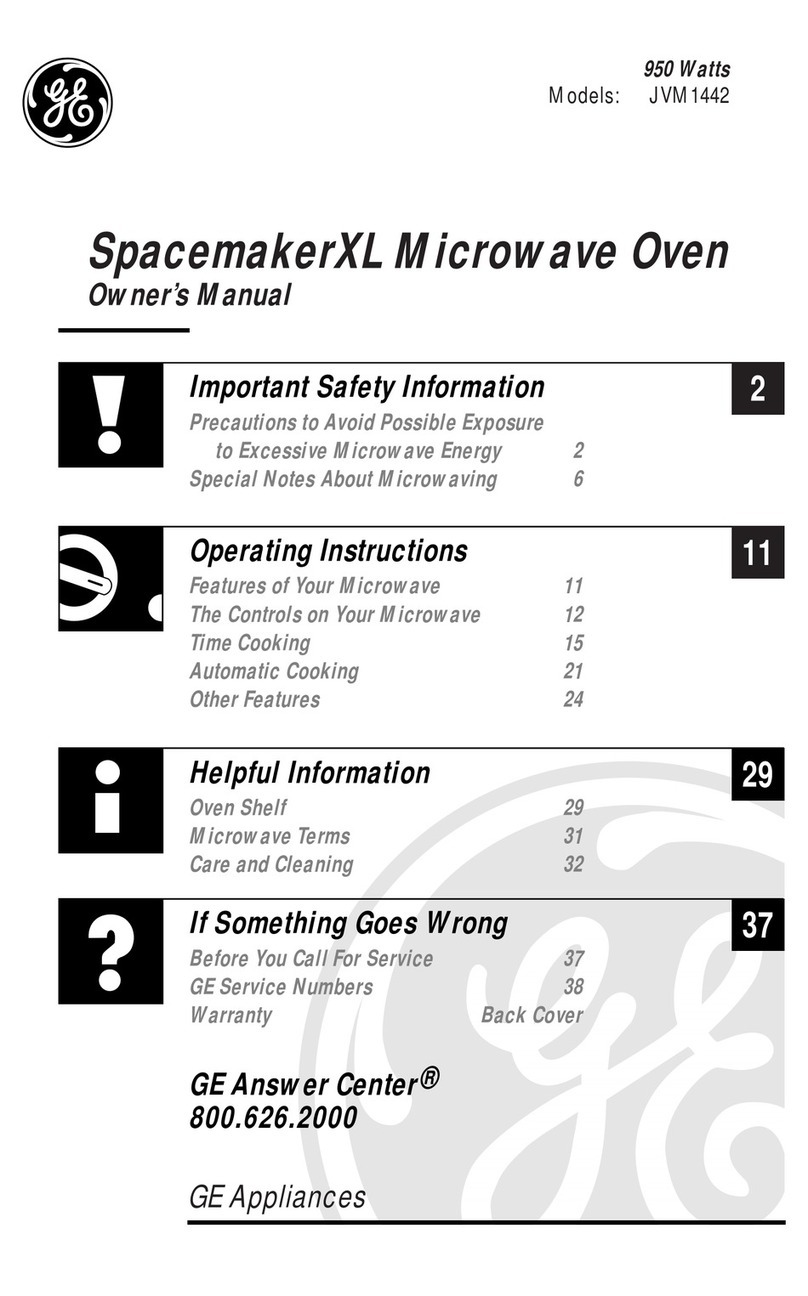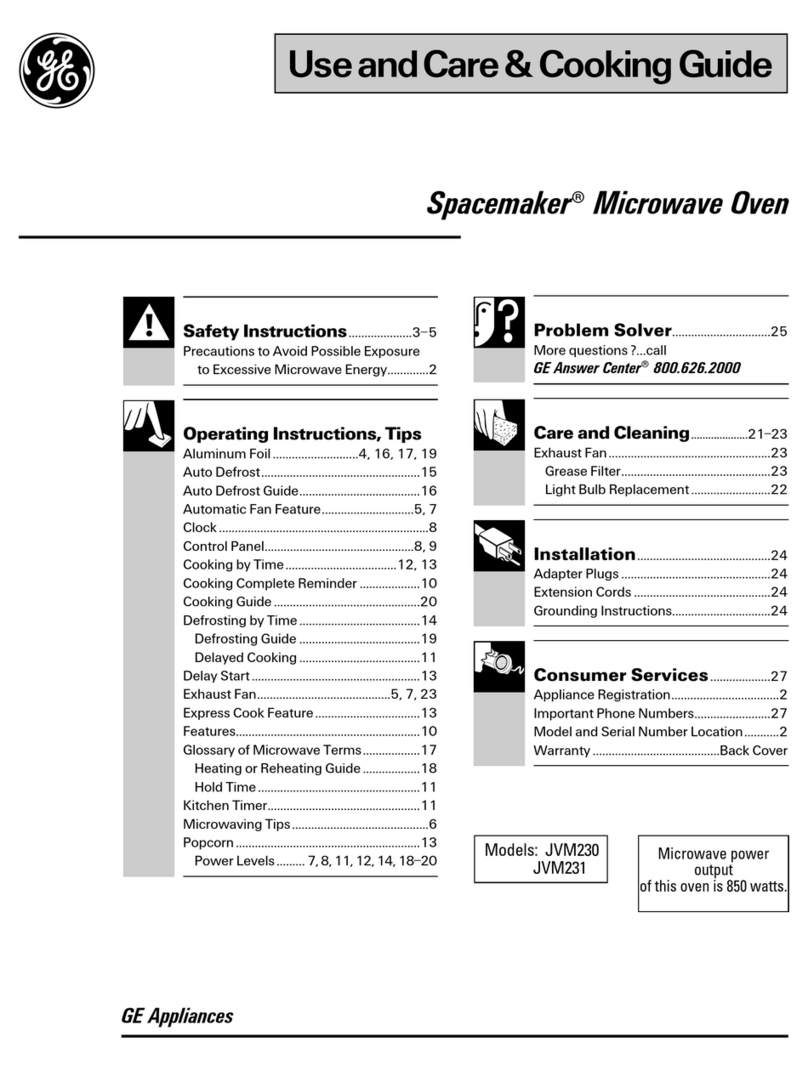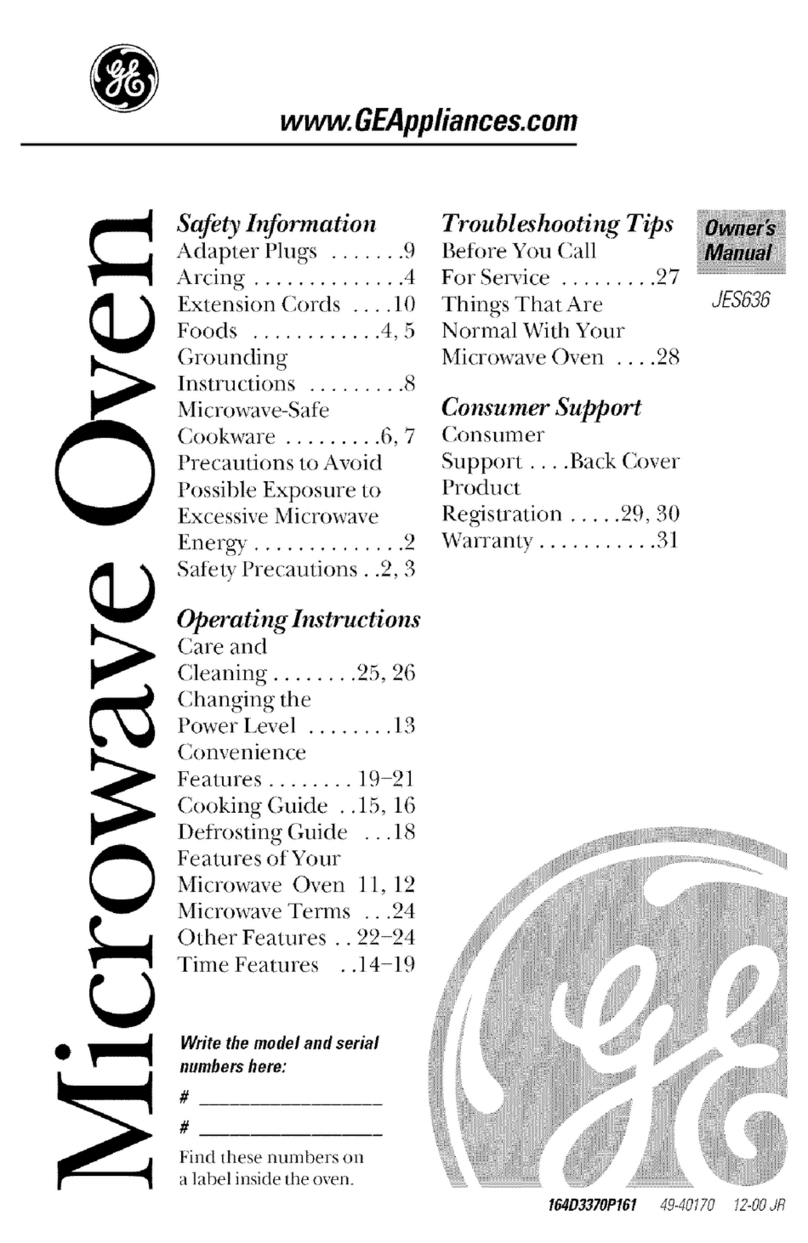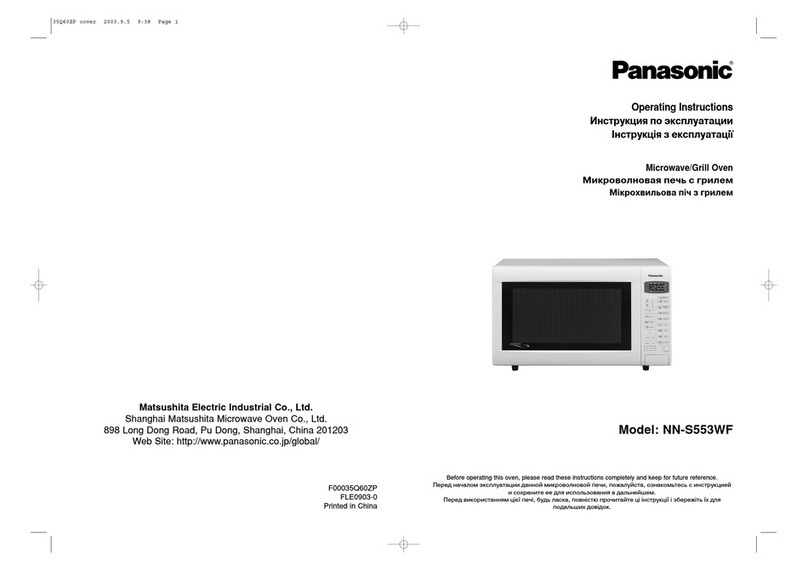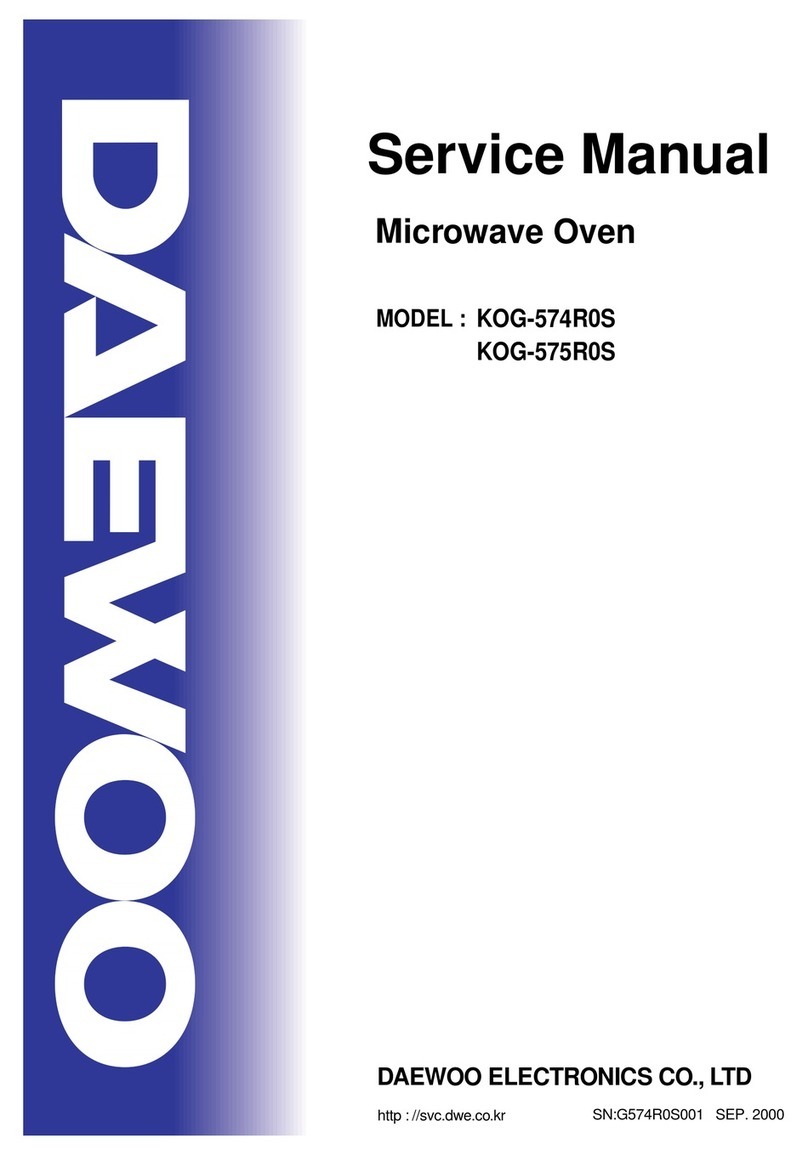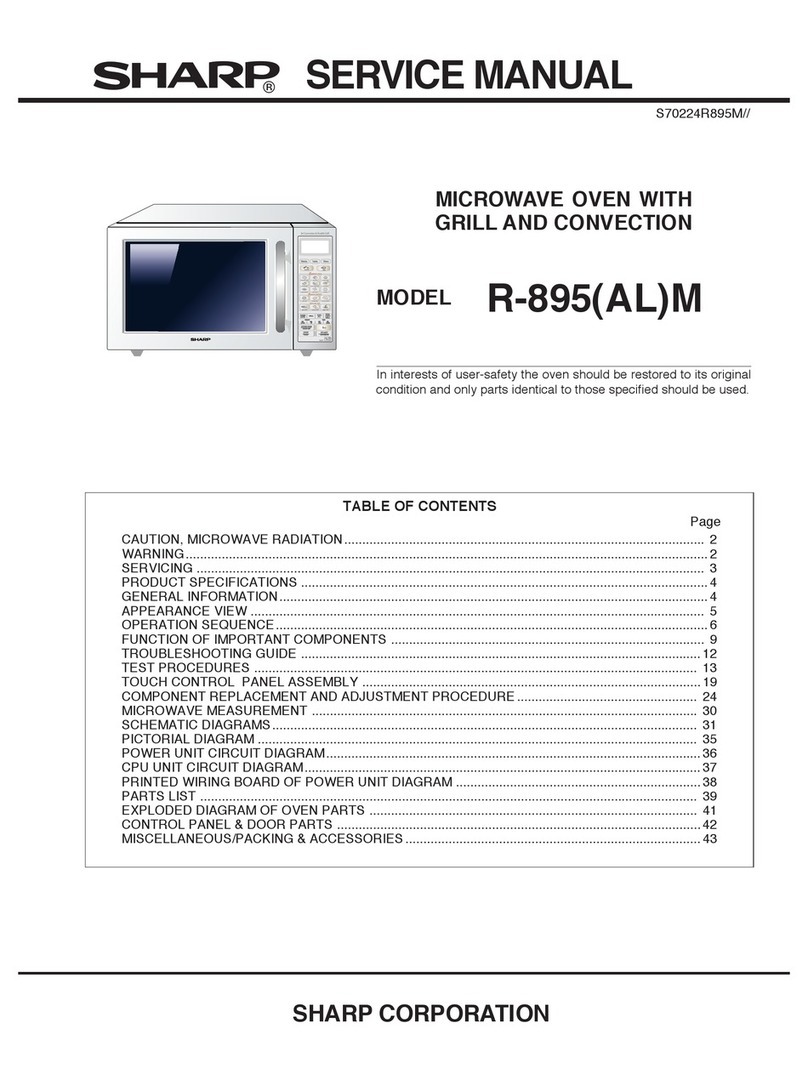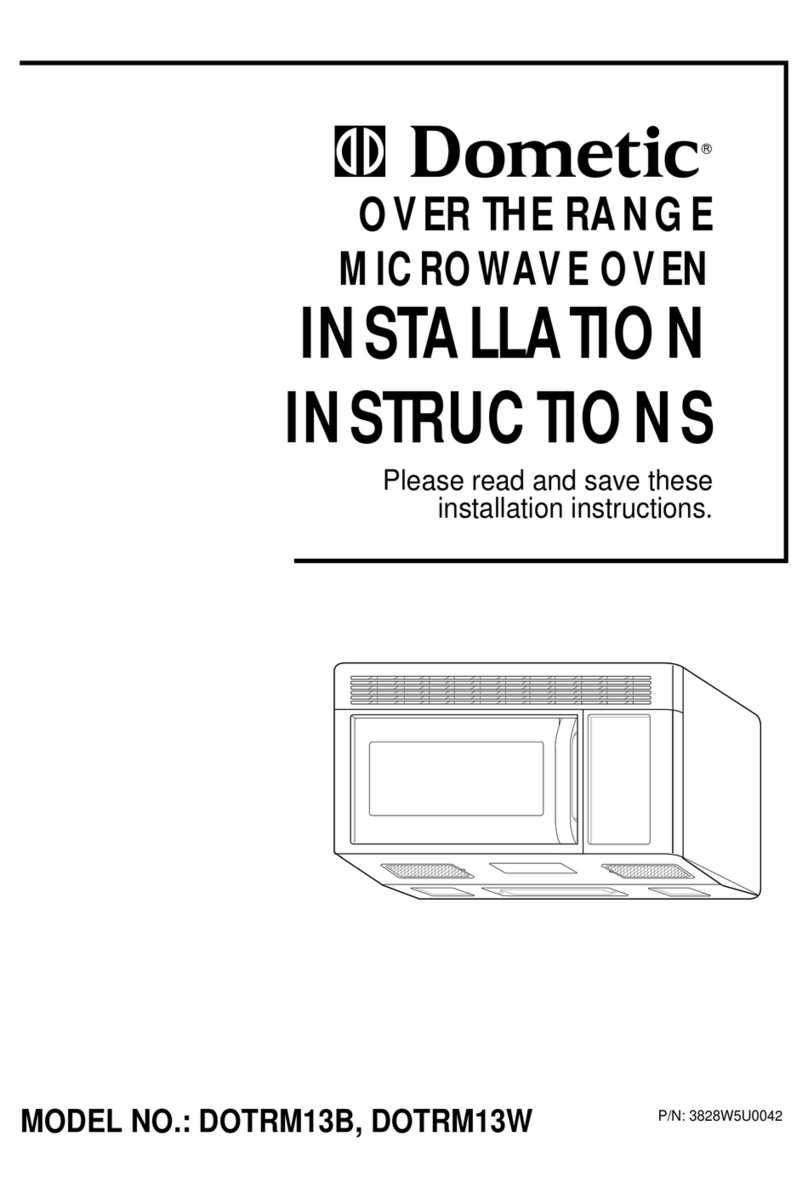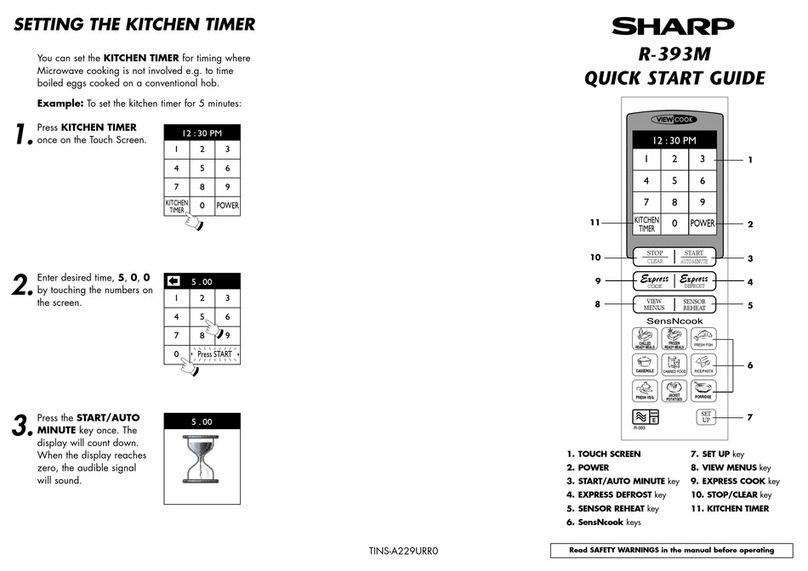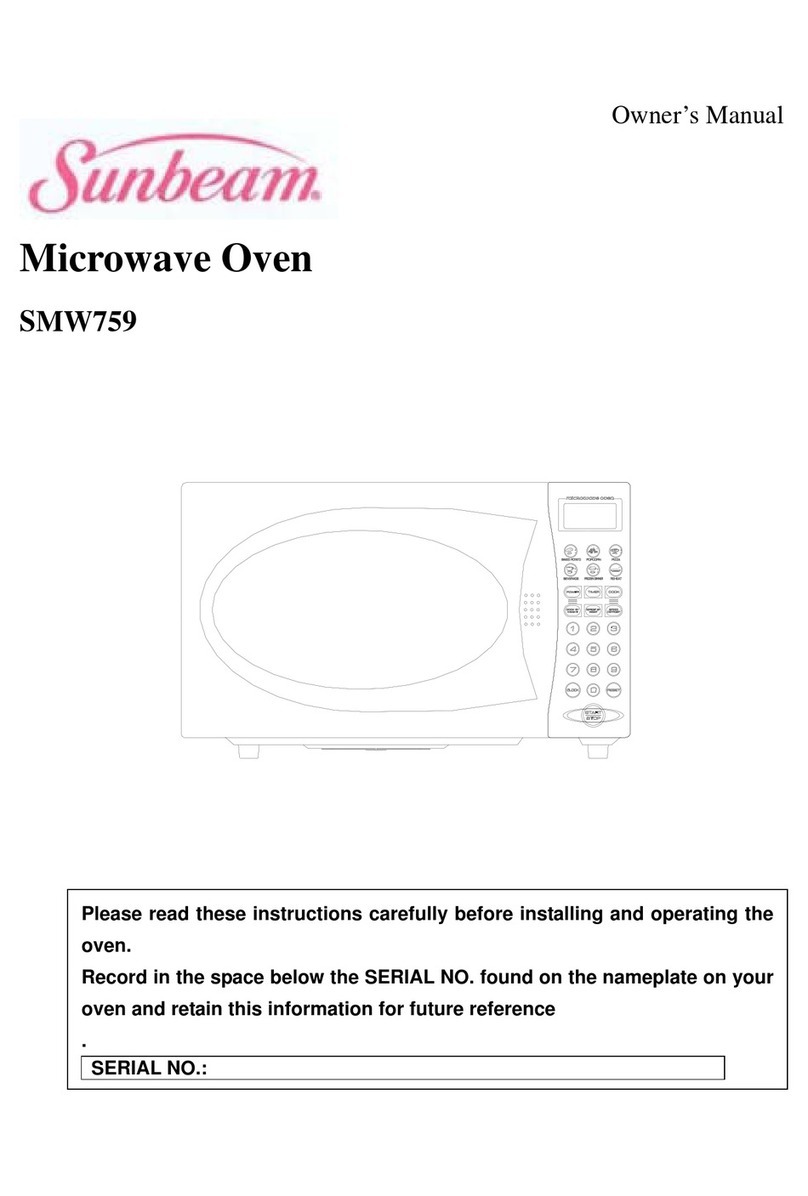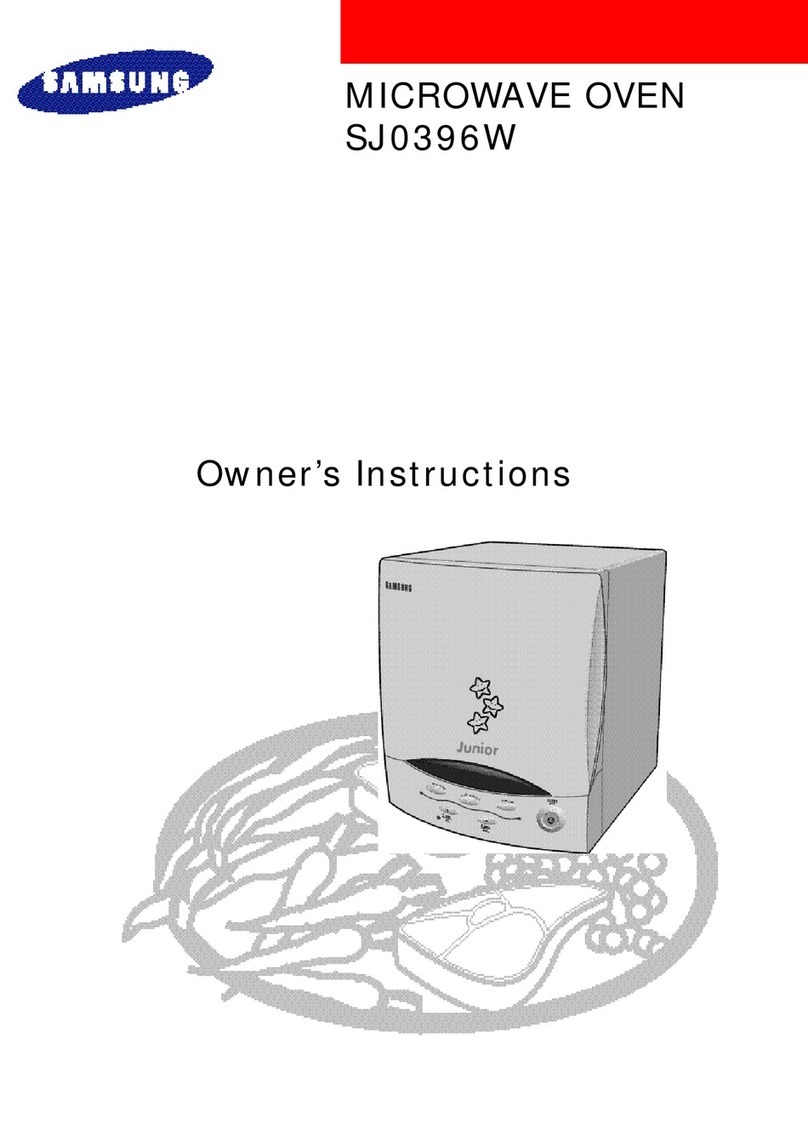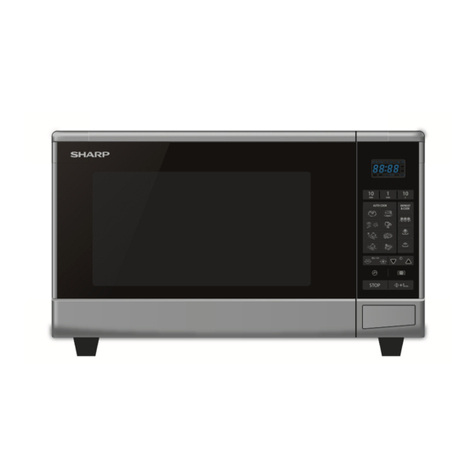
CooMng
The TIME COOK I & II feature
allows you to microwave for a
preset amount of time using
automatic power level 10
(High), or change power level
automatically.
Power level 10 (High) is
recommended for most cooking,
but you may change this for more
flexibility. See your cooking guide.
To become better acquainted with
Because automatic power level 10
is recommended for this cup of
coffee, there is no need to change
the power level. (If power level 10
is not appropriate, see “How to
Change Power Level” below.)
Step 4:
Touch START. “COOK
TIME:’
“POWER
10~’
and time
counting down show on display.
Step 5:
When time is up, the oven
signals
and flashes
“End~’
Oven.
time cooking, make a cup of coffee
by following the steps below.
li~ht
and fan shut off.
Step 1:
Fill a cup
2/3
full of
water, add 1 teaspoon of instant
coffee and stir to dissolve. Use a
cup that has no metal decoration
and is microwave safe (refer to
Microwaving Tips on page 2).
Place cup in oven and close door.
Step 2:
Touch TIME COOK I & II
pad. Display shows “COOK” and
“
~’
“ENTER TIME” is flashing.
1
Step 3:
Select your time. Touch
1, 3 and O for one minute and 30
seconds. Display shows “1:30” and
“POWER
10?’
“COOK TIME”
flashes.
Step 6:
Open the
door.
Using the
~me
Cook II
Feature
The Time Cook II feature lets you
set two time cooking functions
within one program. This is
ideal
if you want to change power levels
during your cooking operations.
Here’s how to do it.
Step 1:
Place food in oven in
microwave-safe container and close
the door.
Step 2:
Touch TIME COOK I & II
Dad.
Dis~lav
shows “COOK” and
“1.”
“ENTER TIME” is flashing.
Step
3: Select your cooking time.
For example, touch 2, 1 and 5 for
two minutes
and
E
seconds. Display
shows
“2:15”
and “POWER
10?’
“COOK
TIME’7
flashes.
Step
4: Touch TIME COOK I & II.
Step
5: Set your cooking time.
II
How to
Change Power
hvel
After setting cooking time,
touch POWER LEVEL pad,
then touch desired number for
new power level.
Step
6: Touch START.
Step 7: “COOK
TIME:’
the
selected power level and the first
programmed cook time, counting
down, show on the display.
Step 8:
At the end of the first
programmed cook time, the next
selected power level, “COOK
TIME” and the second programmed
cook time, counting down, show on
the display.
Step 9:
When time is up, the oven
signals and flashes
“End~’
The
oven, light and fan shut off.
Step 10:
Open the door.
Questions and Answers
Q. I set my oven for the time
called for in the recipe, but at the
end of the time allowed, my food
wasn9t
done. What happened?
A. Since house power varies due
to time or location many Time
Cook recipes give you a time range
to prevent overcooking. Set the
oven for minimum time, test the
food for doneness, and cook your
food a little longer, if necessary.
Q. I touched the number pads
and selected my power level. When
I touched START, however, my
oven
didn’t
come on. Why not?
A. The TIME COOK I & II pad
must be touched before setting the
number pads or else your oven will
not begin cooking.
Q.
I want to cook on a power
level other than High. What do
I need to do?
A.
To change the power level,
touch the POWER LEVEL pad.
“ENTER POWER” flashes on the
display panel. Enter new number.
Q. Can I interrupt my Time
Cook function to check the food?
A. Yes.
To resume cooking,
simply close the door and press
the START pad. The timer must be
reset for cooking to resume unless
time is remaining on timer.
7
